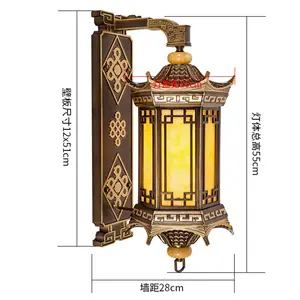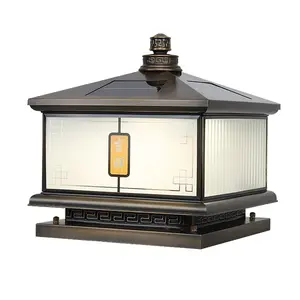(182 products available)















































































































































































































Fencing in the Philippines serves various important roles, including providing privacy, security, and decoration. There is a wide array of fence designs to suit the varied tastes and uses of different homeowners.
Wood remains a popular and readily available choice for fencing in the country, especially in rural and provincial areas. It is an affordable fencing material for agricultural and rural homeowners. The wooden fence is sometimes treated to enhance its resistance to pestilence and treachery and to improve its beauty. It comes in different heights, as shown below:
Bamboo, which is used abundantly in the Philippines due to its strength and malleability, is referred to as the poor man's wood. Bamboo is used to build both traditional and modern fences. It is also eco-friendly and gets more affordable due to easy accessibility. The bamboo sticks used to make such fences can be placed horizontally or vertically. Horizontal placement gives a more traditional appearance, while vertical placement results in a more contemporary look.
Chain-link fencing is particularly used when transparency and visibility are needed. It is commonly used in commercial and industrial settings.
Barbed wire fences use a metallic wire configuration. Barbed wire fences act as a deterrent for persons intending to trespass and secure the homes and agricultural lands of Filipinos.
Concrete fences are durable and offer high levels of security and privacy. They are generally used in commercial enterprises or urban residences.
Fence design in the Philippines can be classified into three categories, depending on the configuration of the individual components:
In terms of style, the range of fencing can be traditional or modern, palisade, or picket fencing. Edging and retaining and landscaping styles also include some fences.
The choice of fencing material influences the style and functionality of fences. Some common materials include:
The Philippines has some regions with high crime rates. That has made many homeowners prioritize security through fencing. High fences with barbed wire tips or spike tops are used for security.
Fencing provides a physical barrier between properties and prevents unwanted intrusion. Various fence designs, like solid or buffet fences, provide privacy by blocking views.
Fencing is used to keep livestock in, keep wild animals out, and protect crops. Barbed wire and wooden fences are commonly used to prevent such problems.
A fence distinctly demarcating boundaries provides clarity regarding property lines. It can also help prevent disputes among neighbors. Chain link and wire fences are often used for this purpose because they are typically transparent.
Fencing can also enhance the aesthetic appeal of the property. It complements the architecture of the house and the overall landscape design. Picket fences, for instance, are popular in residential areas for their decorative appeal.
In rural areas, noise pollution from neighboring properties or passing traffic is common. Solid fences like wooden or concrete fences can help reduce noise by acting as sound barriers.
Fences can protect the house from harsh weather conditions like strong winds, heavy rain, or direct sunlight. For example, a well-placed fence can block wind or provide shade.
Fences can act as support for climbing plants and vines. This transforms the fence into a green wall, which is both beautiful and eco-friendly. These natural elements can improve air quality, provide shade, and contribute to the overall beauty of the property.
Sometimes, local authorities mandate the fencing of properties for safety or environmental reasons. In these instances, fencing becomes a compliance measure.
The following are the key factors that one should consider when choosing a fence in the Philippines:
How the fence is to be used will greatly determine the type of fence to go for. For security and privacy, solid or buffet fences should be used. For demarcating boundaries and keeping animals in or out, open fencing is appropriate. Noise reduction and climatic protection can also influence the choice of fence.
The materials that are used for fencing are wood, bamboo, metal, concrete, and barbed wire. Wood and bamboo are popular due to their natural beauty and eco-friendly nature. Concrete is a durable option that offers high security and needs low maintenance. Metal fences are strong, low-maintenance, and can be decorative. Barbed wire is a cost-effective strategical solution that also offers security.
The style and design of the fence should complement the property and improve its aesthetic appeal. Various fence designs can be modern or traditional, palisade, or picket fencing. The combination of interior and exterior spaces contributes to the overall fence design.
Fences come in short, medium, and high fences and serve different purposes. Short fences are just for decoration. Medium-height fences provide light security and more privacy. High fences are primarily for security and privacy and can be used to block out views.
Some types of fences require intensive maintenance. These are wooden and bamboo fences. It is recommended that the user regularly check for wear and tear, repaint, or replace planks as necessary. Moreover, infrequent maintenance is required for some fences, for instance, concrete and metal fences.
How much the fence costs will be determined by the materials used, the amount of labor required, and the type of fence used. Barbed wire and chain link fences are the cheapest. Wooden and concrete fences are moderately cheap. The most expensive are metal fences.
A1.The most commonly used fencing in the Philippines is chain-link fencing. Chain-link fencing is particularly used when transparency and visibility are needed. It is commonly used in commercial and industrial settings.
A2.Filipinos prioritize security through fencing. High fences with barbed wire tips or spike tops are used for security. Barbed wire fences are robust and effective for securing properties. They are primarily used in rural areas of the Philippines for farming or along border areas.
A3.Fencing purpose, materials, design, maintenance, cost, and local regulations influence the decision.
A4.Wood remains a popular and readily available choice for fencing in the country, especially in rural and provincial areas. It is an affordable fencing material for agricultural and rural homeowners. The wooden fence is sometimes treated to enhance its resistance to pestilence and treachery and to improve its beauty. It comes in different heights, as shown below:
A5.Electric fences provide high security with minimal intrusion, require relatively low maintenance, and have an eco-friendly impact. They are cost-effective in the long run because they do not require constant guarding. Moreover, they can be easily integrated with modern technology for monitoring and control.